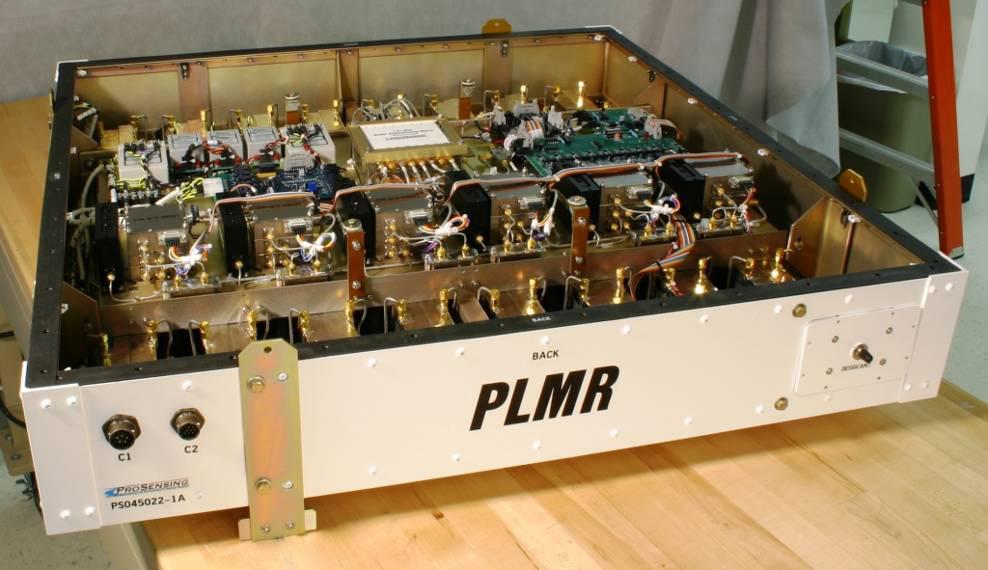Polarimetric L-band Multibeam Radiometer (PLMR)
Polarimetric L-band Multibeam Radiometer (PLMR)The PLMR calibration accuracy was calculated using ground (sky and blackbody) calibration performed during the SMAPEx experiments. The accuracy of PLMR in the typical brightness temperature range observed over water and land (150–300K) was estimated to be better than 1K at H polarisation and 2.5K at V polarisation (Reference: Panciera, R., "Effect of Land Surface Heterogeneity on Satellite Near- Surface Soil Moisture Observations", PhD Thesis, 2009, The University of Melbourne)
Sensor Polarimetric L-band Multibeam Radiometer Center frequency (GHz) 1.413 (L-band; 21cm) Band width (MHz) 24 Polarisation H & V (polarimetric mode optional) Integration time (s) 0.5 Incidence angle (°) ±7, ±21.5, ±38.5 Beam width 3dB beamwidth is 17° along track and 14° across track resulting in an overall 90° across track field of view. Radiometric resolution (K) <1 Weight (kg) 46 Dimension (cm) 91.5 × 91.5 × 17.25
PLMR observations
PLMR observations for SMAPEx-4 are available from Download Centre.
